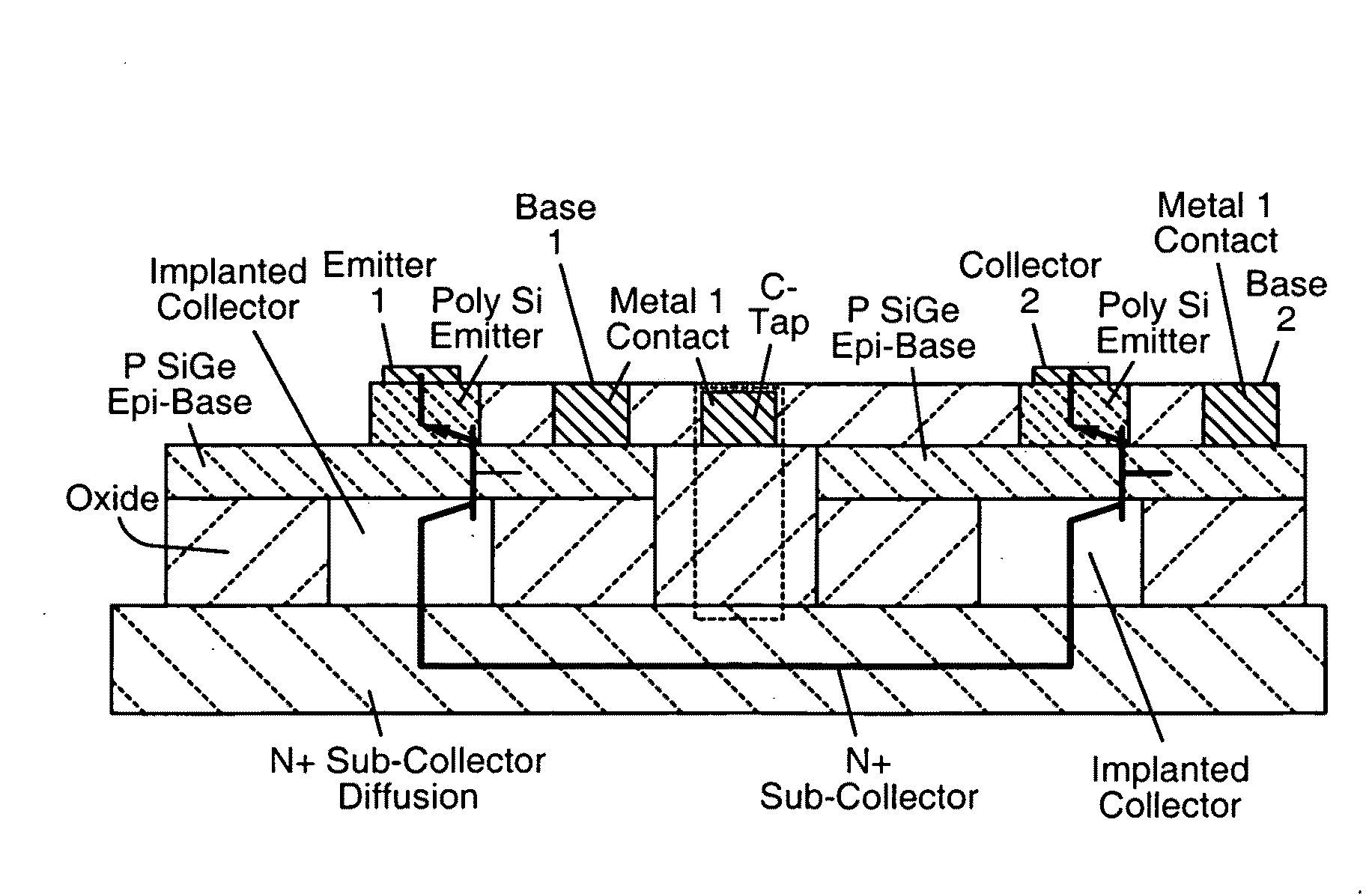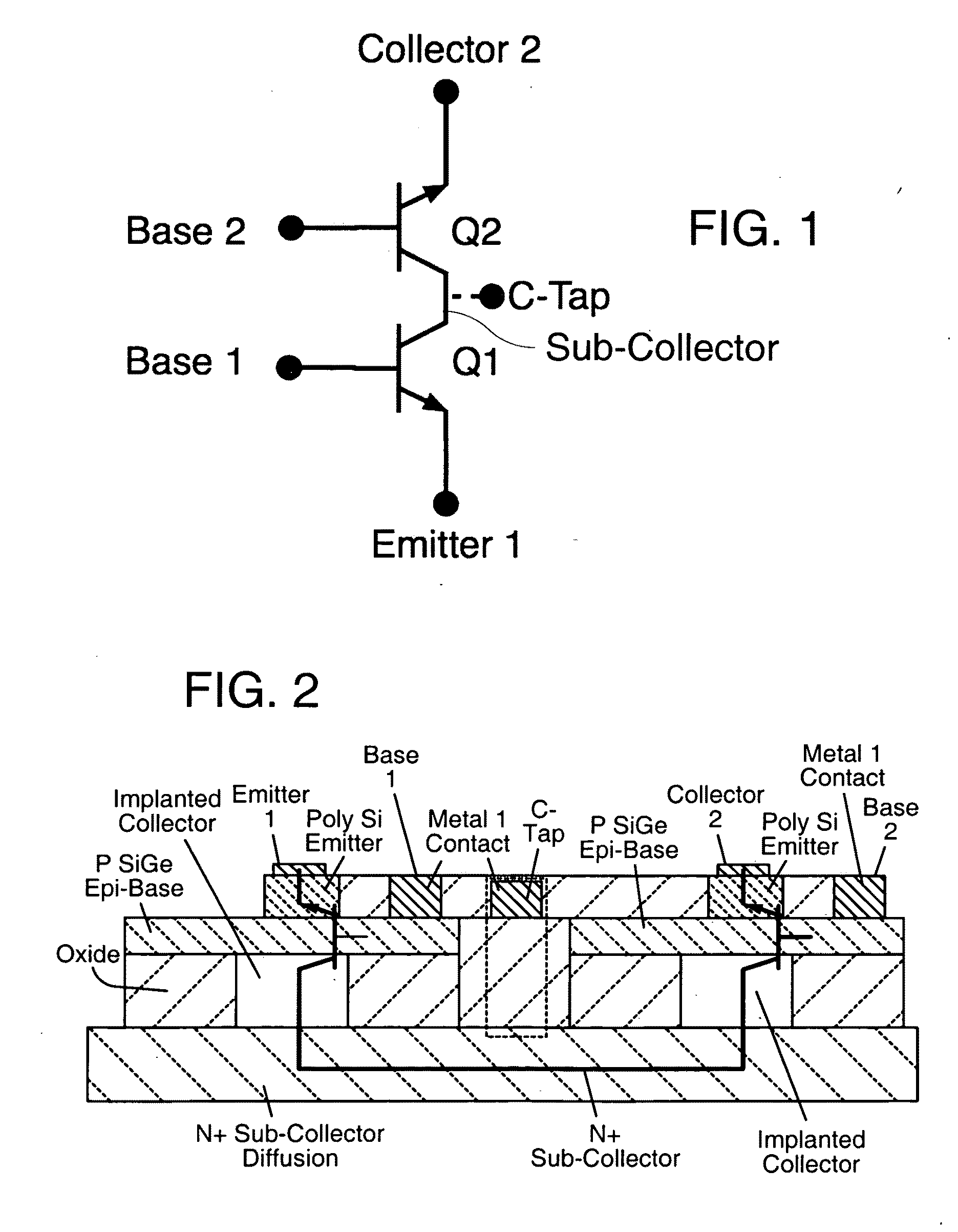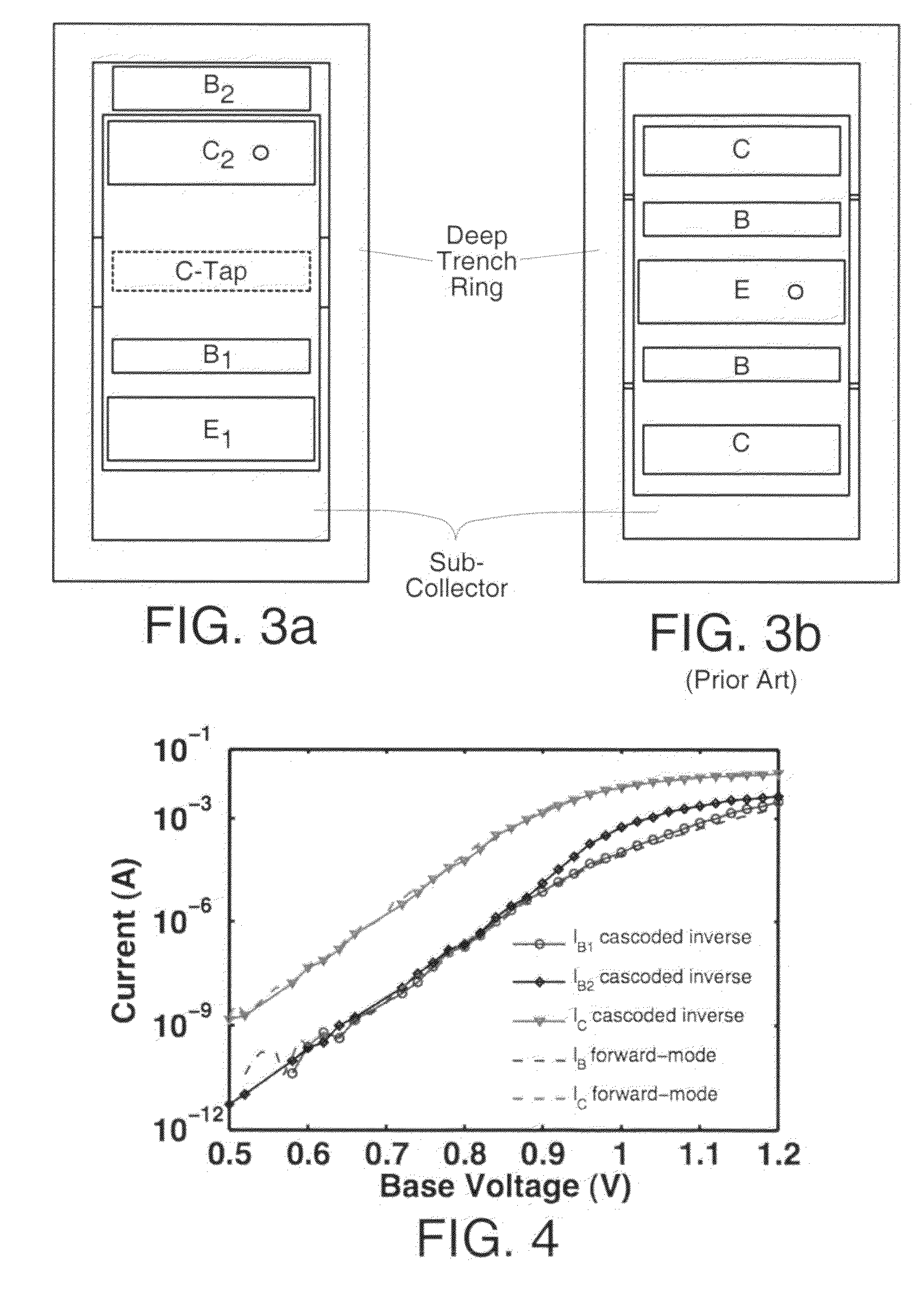Inverse mode SiGe HBT cascode device and fabrication method
a cascode device and inverse mode technology, applied in the direction of transistors, solid-state devices, amplifier combinations, etc., can solve the problems of unwanted effects of semiconductor devices, lag in performance, and high cost of technologies, and the concept has only reached a sufficiently practical sta
- Summary
- Abstract
- Description
- Claims
- Application Information
AI Technical Summary
Benefits of technology
Problems solved by technology
Method used
Image
Examples
Embodiment Construction
[0023]Briefly described, the present technology includes, in a preferred exemplary embodiment, a novel RHBD cascode topology comprising a forward-mode SiGe HBT sharing a sub-collector with an inverse-mode SiGe HBT. An electrical connection to the sub-collector may be present to provide additional SEU immunity. This topology can result in a device with smaller footprint and improved radiation hardening.
[0024]Referring now in greater detail to the drawings, in which like numerals represent like components throughout the several views, FIGS. 1-3 illustrate preferred embodiments of the inverse-mode cascode device.
[0025]FIG. 1 is a schematic of an exemplary inverse-mode cascode device or structure. As shown in FIG. 1, a first transistor, Q1 is operated as a common-emitter amplifier. A second transistor, Q2, is operated in unity-current-gain common-base mode. Given sufficient headroom (two VBE drops at minimum), the device may be operated as a standard single device with an input signal a...
PUM
 Login to View More
Login to View More Abstract
Description
Claims
Application Information
 Login to View More
Login to View More - R&D
- Intellectual Property
- Life Sciences
- Materials
- Tech Scout
- Unparalleled Data Quality
- Higher Quality Content
- 60% Fewer Hallucinations
Browse by: Latest US Patents, China's latest patents, Technical Efficacy Thesaurus, Application Domain, Technology Topic, Popular Technical Reports.
© 2025 PatSnap. All rights reserved.Legal|Privacy policy|Modern Slavery Act Transparency Statement|Sitemap|About US| Contact US: help@patsnap.com



